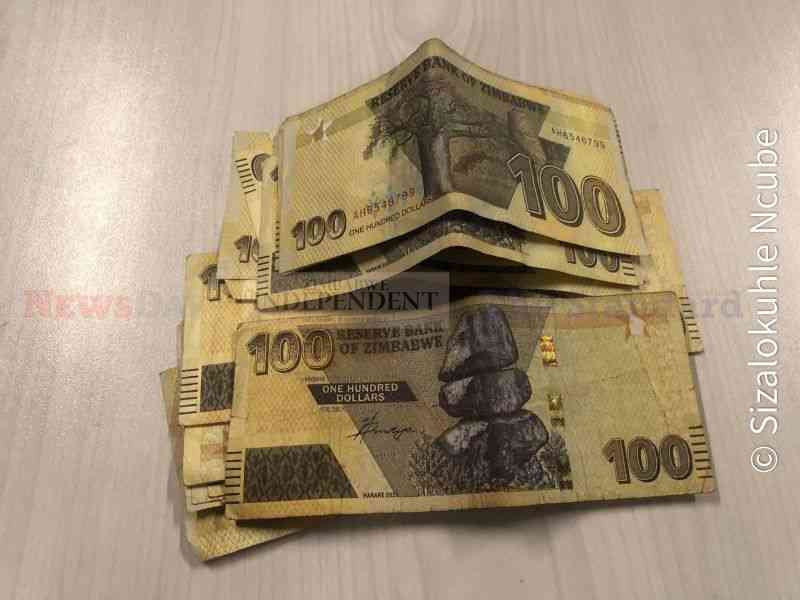
Signs that this year would be challenging were there from the start of the year.
It started in February when Treasury took the unusual step to adopt a blended inflation rate that would use a weighted average of goods and services priced in both Zimbabwe dollars and US dollars to determine the Consumer Price Index (CPI).
This moved away from the old inflation calculation method, which was purely based on Zimbabwe dollar prices.
The decision came after the Zimbabwe National Statistics Agency (Zimstat) reported an annual inflation rate of 229,8% in January. After the switch to the blended inflation rate, February’s annual inflation fell to 92,3%. Economists immediately warned that the drop was artificial, as there was no drastic improvement in economic performance. This evidence was there.
The Zimbabwe dollar had depreciated to US$1:ZW$889,13, a near 30% drop during the first two months of 2023.
And this drop, would only continue.
Zimdollar depreciation
At that time, the depreciation in the Zimbabwe dollar’s value was being driven by aggressive money supply growth, as government turned to the printing presses to fund its operations.
- Zanu PF stretching the truth on prices
- Tough times beckon as prices soar
- Hyperinflation leaves firms in reporting fix
- Why Zim persistently ranks high on inflation
Keep Reading
For example, when the Zimbabwe dollar had depreciated by nearly 30%, and money supply had increased by 25,38%.
By the end of April, the money supply had grown by another 23%, causing the local currency to depreciate by nearly 18% to US$1:$1 047,44. On the 11th of May, Treasury, in panic, introduced several measures to try and curb the fall of the local currency. These included 100% retention on domestic forex earnings, adoption of all external loans by Treasury, enhanced forex auction system, a supportive interest rate environment, and gold coins and gold backed digital coins to offer an alternative store of value.
Treasury also ordered ministries to accept payments in Zimbabwe dollars for payment of fees, levies, and other charges by consumers.
However, these measures had little impact, as the Zimbabwe dollar fell by a 146%, against the greenback, to US$1:$2 577,05 by the end of May, from the prior month. Looking money supply within the same period, it had risen by 101,15% to ZW$7,23 trillion. Driving the money supply were government contractors doing forward pricing on goods and services supplied to the state, amid high speculation.
Treasury introduced more measures on May 29 to stabilise the local currency that included funding the Zimbabwe dollar component of the 25% surrendered by exporters, a 1% tax on foreign payments to force people to use Zimbabwe dollars, and reduction of transactions fees.
Other measures included making all duty, save for some products, payable in Zimbabwe dollars, instructing state enterprises to accept the Zimbabwe dollar, and limiting foreign currency bids on the forex auction to control liquidity. Treasury also announced it would increase non-monetary assets to mop up excess liquidity such as the gold, gold backed digital coins as well as compelling the central bank to tighten its monetary policy.
Again, these measures had little impact, as the Zimbabwe dollar depreciated by another 122,72% to US$1:$5 739,79 by the end of June, as money supply grew by 97,2% to $14,27 trillion, from May.
Here, the government decided to increase its implementation of a ‘value for money’ programme, first implemented in August 2022, which saw it only paying for goods and services that did not have forward pricing. Resultantly, the Zimbabwe dollar appreciated by 21,3%, against the greenback, to US$1:$4 516,80 by the end of July. These gains tallied with money supply falling by 9% to about ZW$13 trillion by the end of the same month.
However, the value for money programme was beginning to run out of steam as the government still needed the goods and services from contractors with most of these providers keeping a forward pricing model. Even with Zimstat, adopting a geometric calculation in calculating the blended inflation rate that saw annual inflation recorded at 18,4% in September, from 77,3% in the previous month, the local currency continued to depreciate.
By the end of October, the Zimbabwe dollar had depreciated by 32,15% to US$1:$5 698,96 from July.
During the same period, money supply had increased by 29,12% to ZW$16,79 trillion.
Realising that there was no way to implement the value for money programme as contractors kept on forward pricing, Treasury introduced a slew of new taxes, levies, and fees by the end of last month.
These include the introduction of a wealth tax, the Domestic Minimum Top Up Tax and a 2 US cent charge per gramme of sugar contained in beverages.











